
Sample Sources
The sources below are those contained in our three curated collections—covering themes of Passover, Gender Roles, and Holocaust Resistance. They represent a fraction of the thousands of sources that will be available when the full site launches in 2024.
Folktales of the Kurdistani Jews
The year 5573 (1813) was a leap year (in the Jewish calendar). On the twenty-fourth of Nisan, the Sabbath right after Passover, after midday, the skies became overcast and…
Mor u-ketsiyah (Myrrh and Cassia)
In times of emergency, all types of kitniyot (legumes, pulses) may certainly be permitted to be eaten during Passover, for even our Master, the Ba‘al Ha-Turim [Rabbenu Jacob, son of Asher]…
Rabbinic Reports on Circumcision
Altona, 24 Ab 5603
Chief Rabbi!
Messrs. Adler and Fuld, members of your congregation, asked for my opinion, from the Jewish-religious perspective…
Letters of a Young Ex- Hasid
We live in a time of a universal striving for science and civilization, and the spirit of the time warms the hearts of everyone alike with its breath. It permeates the depths of the soul and reason…
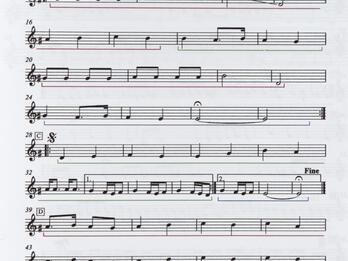
Niggun of Four Stanzas
A notated version of a wordless Hasidic niggun, melody, attributed to Shneur Zalman of Liady, the founder of Chabad Hasidism.
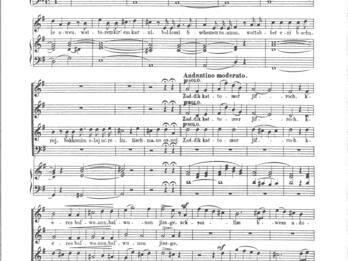
Psalm 92, Od yenuvun (They Shall Still Bring Forth)
This setting for Psalm 92 is one example of the innovative music composed by Louis Lewandowski, Samuel Naumbourg, and Salomon Sulzer (1804–1890) for the synagogues of the new Reform movement. Their…
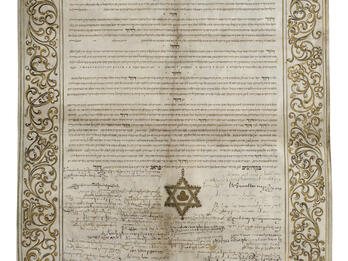
Contract of David Oppenheim with the Prague Jewish Community
David Oppenheim (1664–1736) was the chief rabbi of Prague. Born in Worms, he was the son of a communal leader and nephew of Samuel Oppenheim (1630–1703), financier and war contractor to the Habsburg…
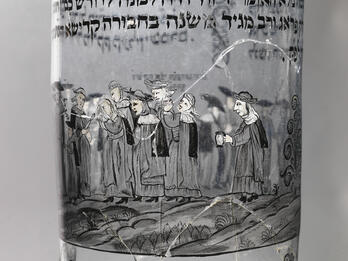
Glass for a Burial Society’s Annual Banquet
This beaker was used by the members of a burial society in Prague at their annual banquet, held on the day traditionally designated as the anniversary of Moses’ death. The painted scene depicts a…
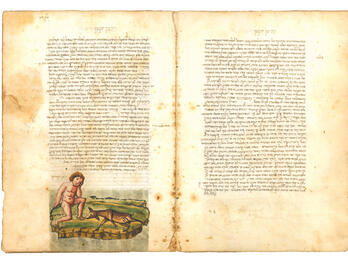
Moses Narboni’s Commentary on Ibn Tufayl’s Ḥay ibn Yaqzan
Ḥay ibn Yaqẓān, composed by the Muslim philosopher Abū Bakr ibn Tufayl al-Qaysi (1110–1185), relates the story of Ḥay ibn Yaqẓān, literally “Alive, son of Awake,” as he grows up alone on a deserted…
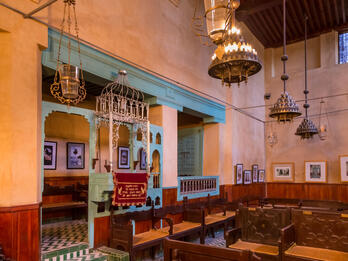
Ibn Danan Synagogue, Fez, Morocco
Built in the seventeenth century by the prominent Ibn Danan family, the Ibn Danan synagogue is located in the oldest and largest Jewish quarter of Fez, Morocco. It is one of the few remaining old…
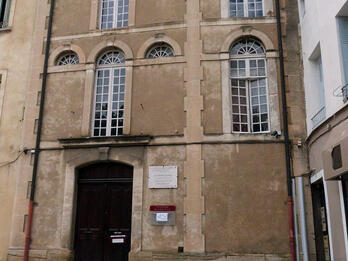
Synagogue (Carpentras, France)
This synagogue, located in Carpentras, in Provence, was built in 1367 but went through serious repairs and was remodeled between 1741 and 1744 by a local civil engineer Antoine D’Allemand, in the…
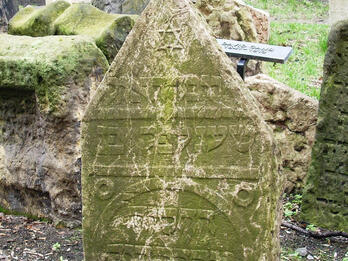
Tombstone of David ben Solomon Gans
This is an image of the tombstone of David Ganz, Prague. Born in Lippstadt (now North Rhine-Westphalia, Germany), Ganz (1541–1613) was a chronicler, mathematician, historian, astronomer, and…


